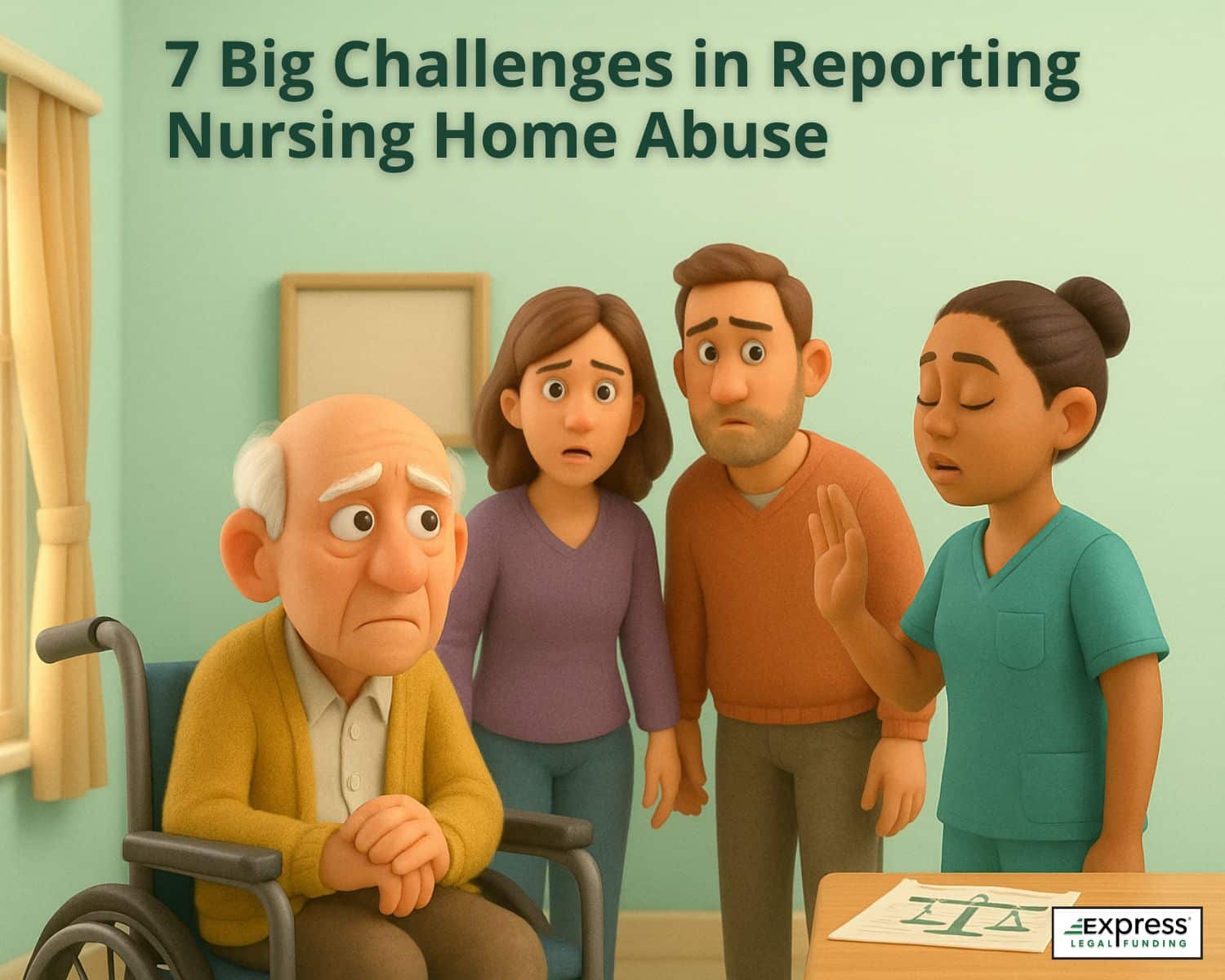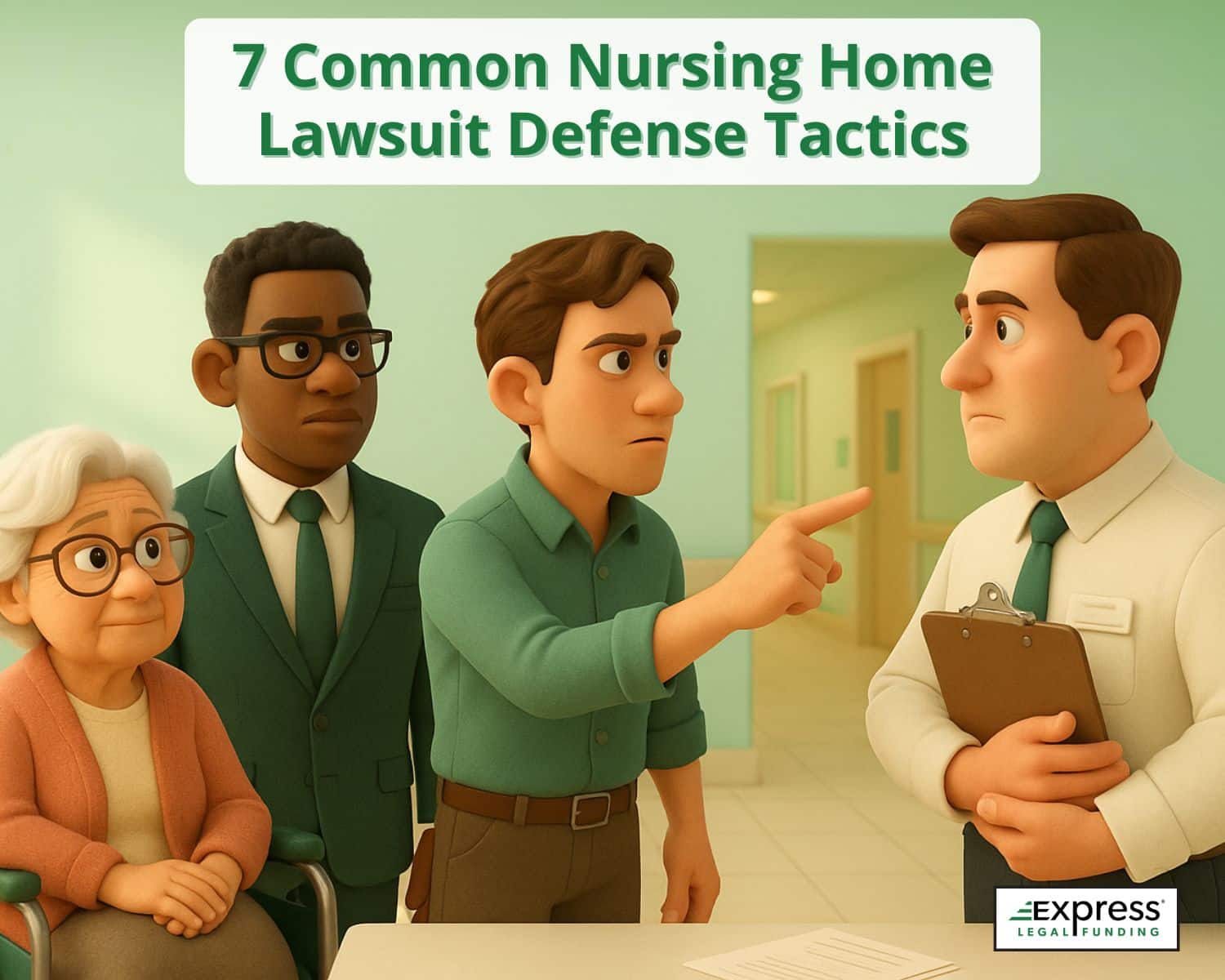
You discover your mother’s bruises, your father’s sudden weight loss, or your spouse’s unexplained fracture. You brace yourself to confront the nursing home — expecting outrage, an apology, a plan to make it right.
Instead, you’re met with a polished smile and carefully chosen words:
“Her condition caused this.”
“It was just an accident.”
“We followed all the rules.”
What you may not realize yet is that these aren’t casual explanations — they’re tactical defenses straight from the corporate playbook. Nursing homes, especially the big ones, are armed with lawyers and insurance companies whose sole job is to protect the facility, not your family.
They will shift blame, poke holes in your story, twist medical facts, and hide behind technicalities. And if you’re not ready, they can make you feel like you have no case at all.
But here’s the truth: every one of these defenses has a counterpunch. You can dismantle them with the right strategy, the right evidence, and the right timing. And when you do, you not only protect your loved one’s rights — you send a loud, clear message that they cannot get away with abuse and neglect under the cover of legal spin.
In this guide, we pull back the curtain on the exact nursing home lawsuit defense tactics used to dodge responsibility and show you how families and their attorneys have beaten each one in real courtrooms. If they want to play defense, you’re about to learn how to go on the attack.
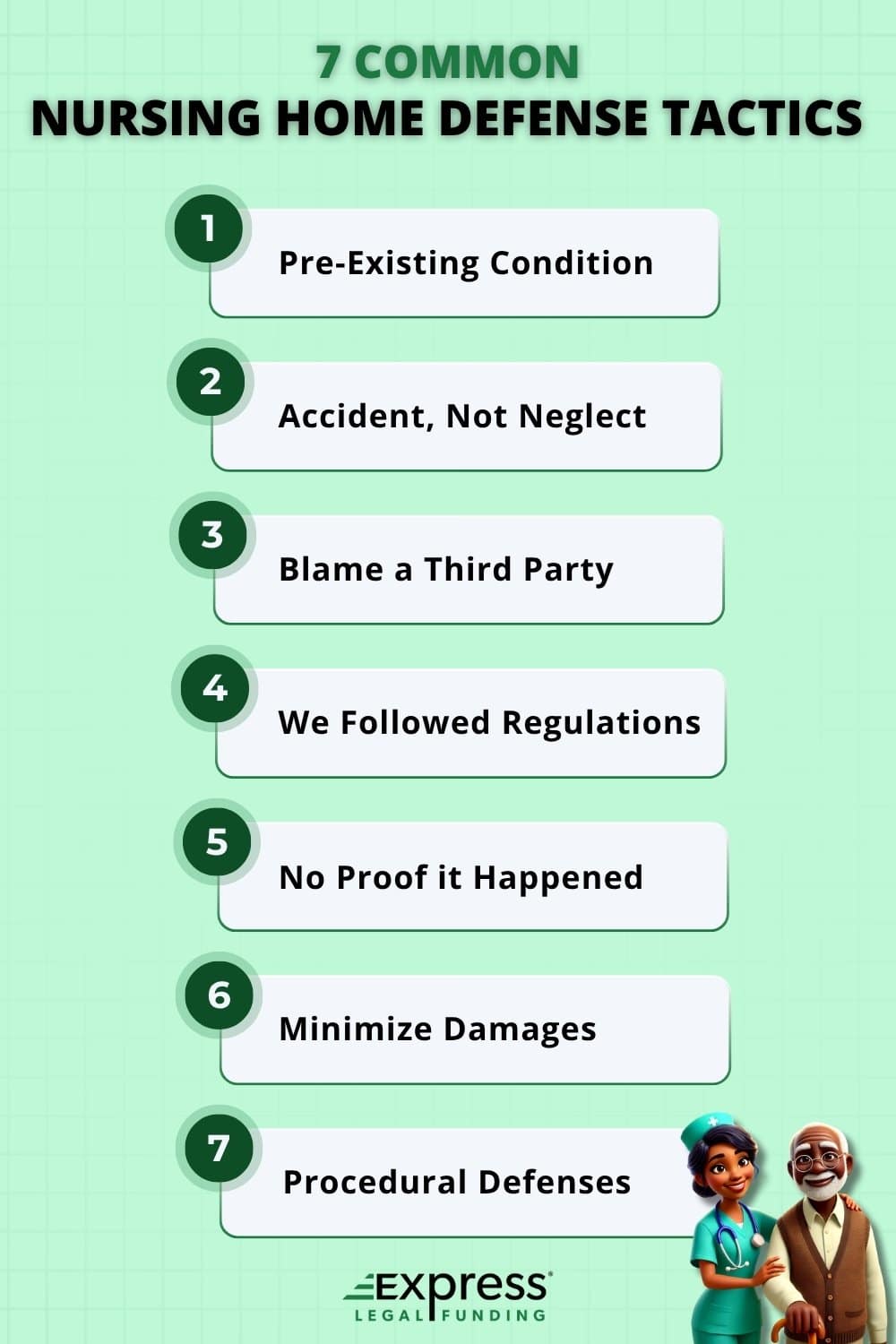
7 Common Defense Tactics Nursing Homes Use to Dismiss Your Lawsuit
When a nursing home abuse lawsuit is filed, you can almost guarantee the facility — and its lawyers — will push back hard. Their goal is to protect their reputation and avoid paying damages. To do this, they often rely on a predictable set of legal defenses.
Here’s what they are:
- “Pre-Existence Condition” Defense
- “Unavoidable Accident” (No Negligence)
- “Blame the Third-Party” (Independent Actor / No Direct Liability)
- “We Followed All Regulations” (Compliance Defense)
- “No-Proof It Happened” (Lack of Evidence)
- “Minimal Damages” or “You’re Exaggerating”
- Procedural Defenses
Now, let’s examine each defense tactic—why nursing homes rely on it and how an experienced attorney can effectively dismantle it.
1. “Pre-Existing Condition” Defense
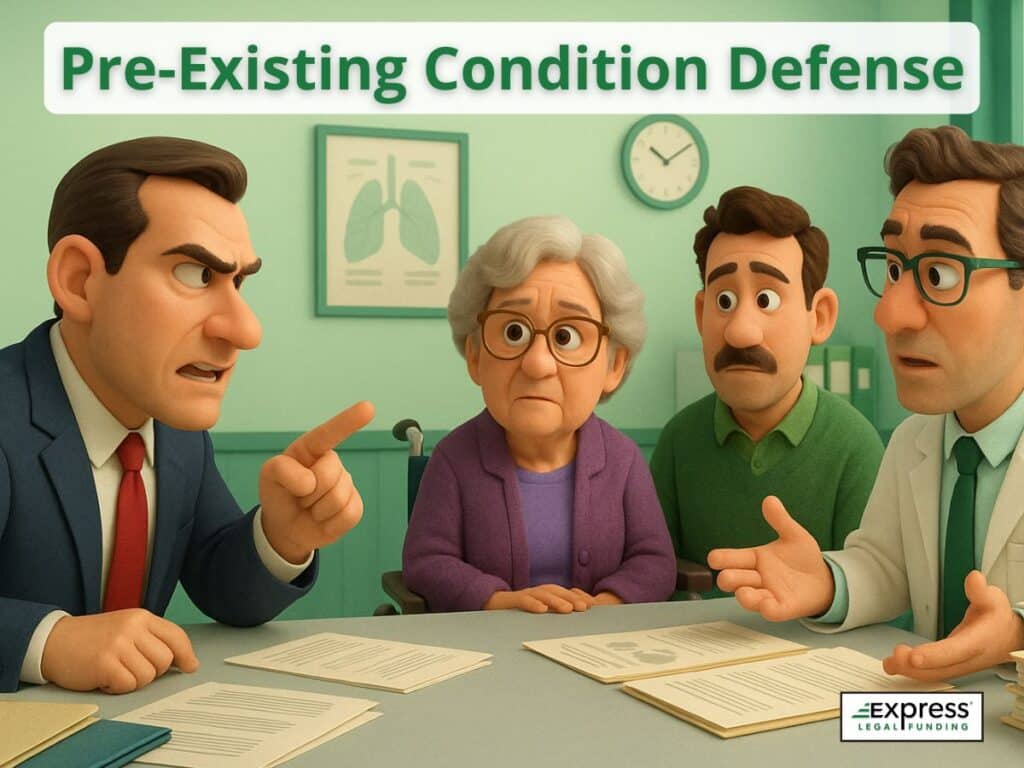
The nursing home claims your loved one’s injury or decline was due to an existing illness, disability, or general frailty — not anything the facility did wrong.
For example: If your parent had advanced osteoporosis, they might argue a fractured hip was inevitable, even without negligence.
Why they use it
This tactic can plant doubt in jurors’ minds: “Maybe the injury wasn’t preventable.” If successful, it can reduce or eliminate the damages you can be compensated.
How to counter it
- Baseline Health Records: Gather medical documentation from before admission, showing your loved one’s mobility, weight stability, mental state, and overall condition.
- Comparative Medical Evidence: Prove that despite pre-existing issues, the specific injury only occurred after preventable neglect — e.g., an avoidable fall due to the home failing to use bed alarms.
- Expert Testimony: Have a medical professional explain that the facility should have accounted for the condition and prevented the harm (e.g., implementing fall-prevention protocols in high-risk residents).
Example
In a New Jersey case, a long-term care facility argued a resident’s sepsis was from “chronic illness.” Discovery revealed that no wound checks were done for six days. The jury awarded $1.1M, citing the lack of basic nursing assessments.
2. “Unavoidable Accident” (No Negligence)
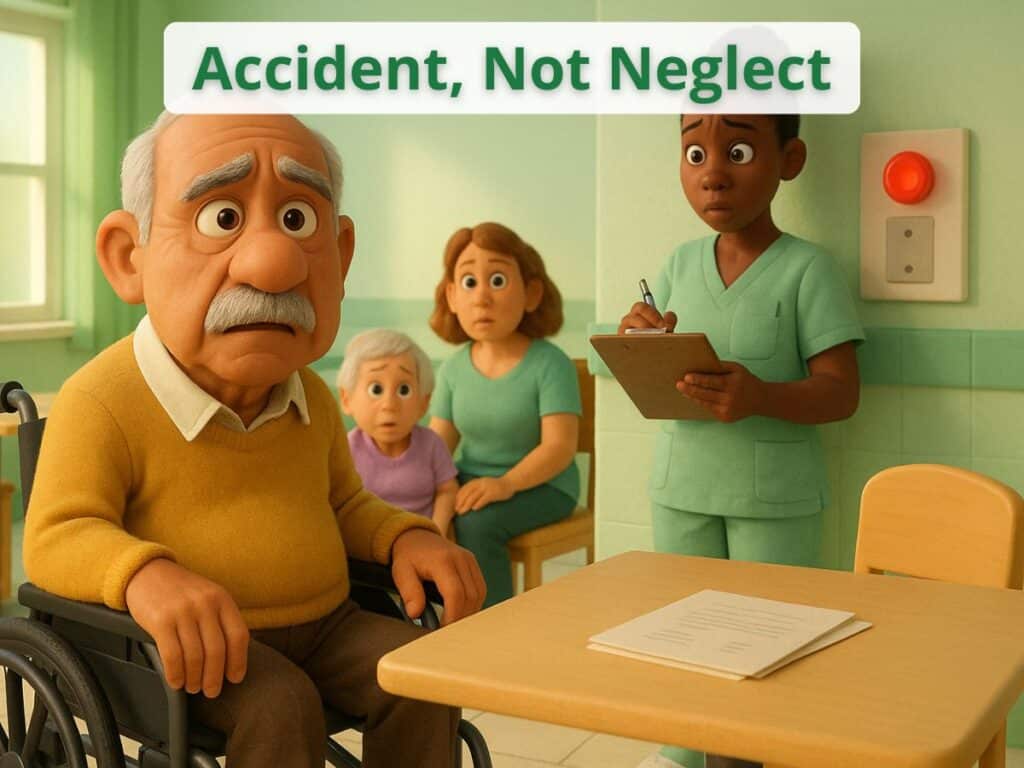
The nursing home admits the injury happened under its care but insists it was just an unfortunate accident — something no one could have prevented.
Why they use it
Framing harm as “unavoidable” can reduce liability under negligence law, where the standard is failure to use reasonable care.
How to counter it
- Staffing Logs: Demonstrate the facility didn’t meet its own staffing guidelines or state-mandated minimums. Chronic understaffing often leads to preventable “accidents.”
- Response Time Records: Many falls and medical events escalate because no one responded quickly. Call bell logs, hallway camera footage, and EMR timestamps can reveal dangerous delays.
- Policy Compliance Checks: Compare what happened with written care plans or fall-prevention policies. If a resident was left unsupervised in violation of those guidelines, it’s neglect — not a blameless accident.
Example
In Texas, a resident fell in the dining room. The facility called it “an accident.” The plaintiff’s lawyer produced a time-stamped hallway video showing the resident wandering unattended for 19 minutes after a nurse ignored a call button. The jury found negligence and awarded $750,000.
3. “Blame the Third Party” (Independent Actor / No Direct Liability)
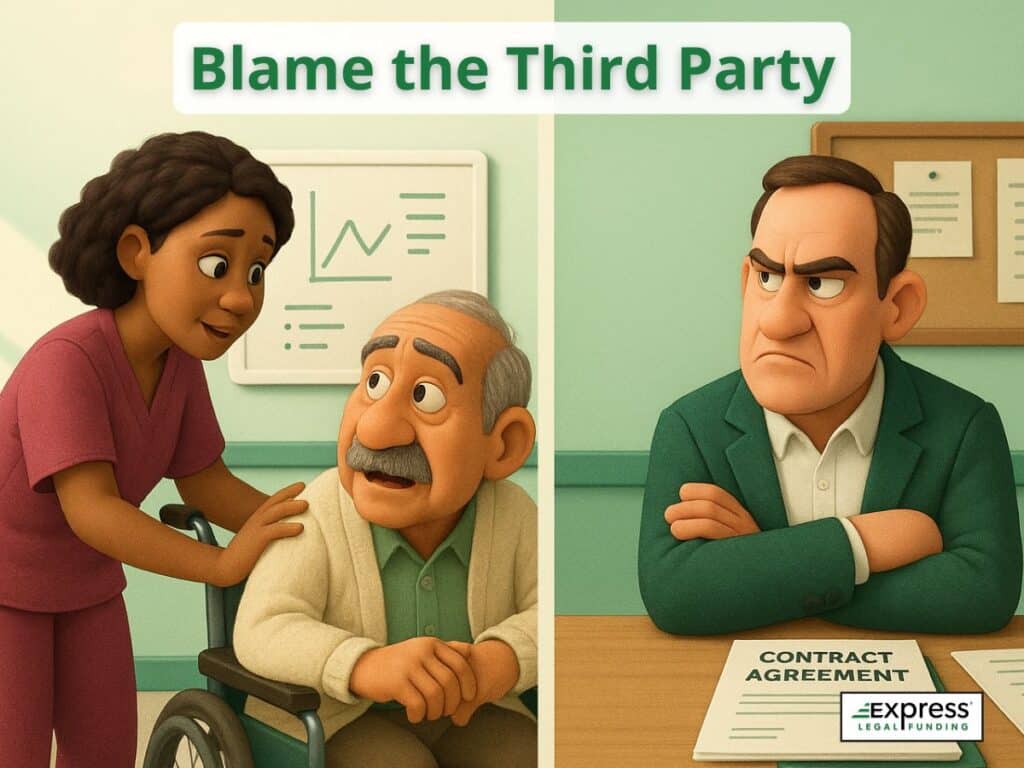
The home shifts responsibility to outside contractors, such as agency nurses, physical therapists, or even transportation providers.
Why they use it
To limit legal exposure by suggesting the wrongdoing was outside their control.
How to counter it
- Non-Delegable Duty of Care: In most states, facilities can’t escape liability for core obligations like providing food, water, medical attention, and safe conditions — even if they use contractors.
- Contract and Control Evidence: Show that the facility supervised, scheduled, and directed the contractor’s work, making them vicariously liable.
- Care Plan Integration: If contracted services (e.g., physical therapy) were part of the care plan, the home remained responsible for ensuring quality and safety.
Example
A Florida nursing home tried blaming a wound care contractor for an infected bedsore. Court records showed the wound care orders came from the facility’s nursing director and that staff failed to reposition the resident between contractor visits. The case settled for $2.3M.
4. “We Followed All Regulations” (Compliance Defense)

The nursing home claims it complied with all state and federal regulations, citing “clean” inspection reports or the absence of recent citations as proof of proper care.
Why they use it
If they convince a jury that they met minimum regulatory standards, they imply they couldn’t have been negligent. Defense lawyers sometimes position compliance as a shield to avoid liability.
How to counter it
- Show Regulations Are a Baseline, Not the Standard of Care: Federal laws like the Nursing Home Reform Act of 1987 (part of OBRA) set only the minimum care requirements under CMS regulations. These rules require nursing homes to help each resident achieve their best possible health and quality of life. Simply passing inspections or meeting these minimum standards doesn’t prove the facility provided reasonable care under the law. Some statutes specifically state that passing inspections doesn’t exempt facilities from civil liability.
- Challenge the Accuracy of Inspection Reports: Regulatory surveys are often brief snapshots and can miss ongoing problems. Subpoena prior complaint investigation files, which may reveal numerous unreported or unresolved incidents.
- Use Expert Analysis: Geriatric care experts can explain to jurors how a facility can pass inspections but still deliver unsafe, negligent care.
Relevant read: 7 Big Challenges in Reporting Nursing Home Abuse
Example
In an Ohio trial, a nursing home touted its “deficiency-free” survey. The plaintiff countered with testimony from an ombudsman showing that inspections were pre-scheduled and residents were coached to give positive answers. The jury awarded $980,000, stating that the inspection results were not persuasive evidence of real safety.
5. “No Proof It Happened” (Lack of Evidence)
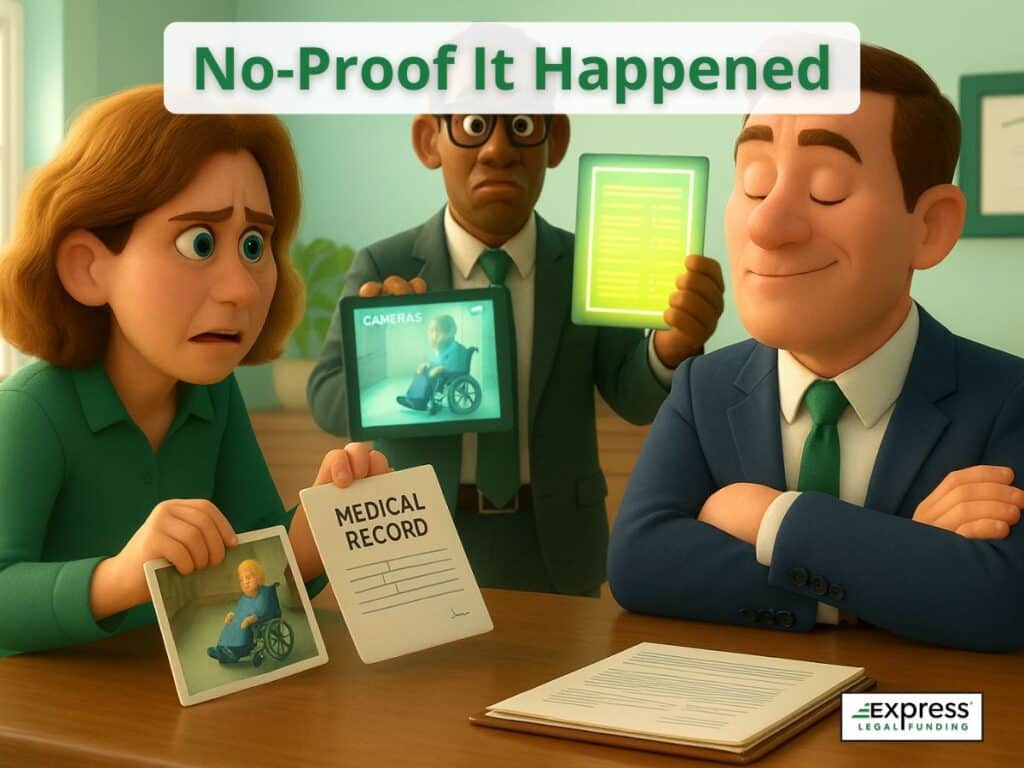
The facility outright denies that the abuse, neglect, or personal injury occurred, often shifting the burden back onto the resident or family to produce definitive proof.
Why they use it
Under civil law, the plaintiff must prove the case by a preponderance of the evidence. If the defense can argue that key facts are “in dispute” and there’s no solid evidence, they can weaken your claim.
How to counter it
- Secure Contemporaneous Evidence: Photos, nurse progress notes, EMS run sheets, and hospital intake reports can be compelling.
- Leverage Technology: Pull security camera footage, access badge logs, and electronic chart timestamps before they’re deleted.
- Involve Witnesses Early: Statements from other residents, volunteers, or visiting relatives can corroborate the incident. Memories fade, so fast action is crucial.
Example
A Pennsylvania facility denied that a resident suffered a fall under its care. The plaintiff’s attorney obtained time-stamped meal delivery records showing the resident missed lunch after being found injured — evidence that the injury occurred on-site. The case settled for $600,000 two weeks before trial.
Helpful reading: How to Report Nursing Home Abuse: A Step-by-Step Guide
6. “Minimal Damages” or “You’re Exaggerating”
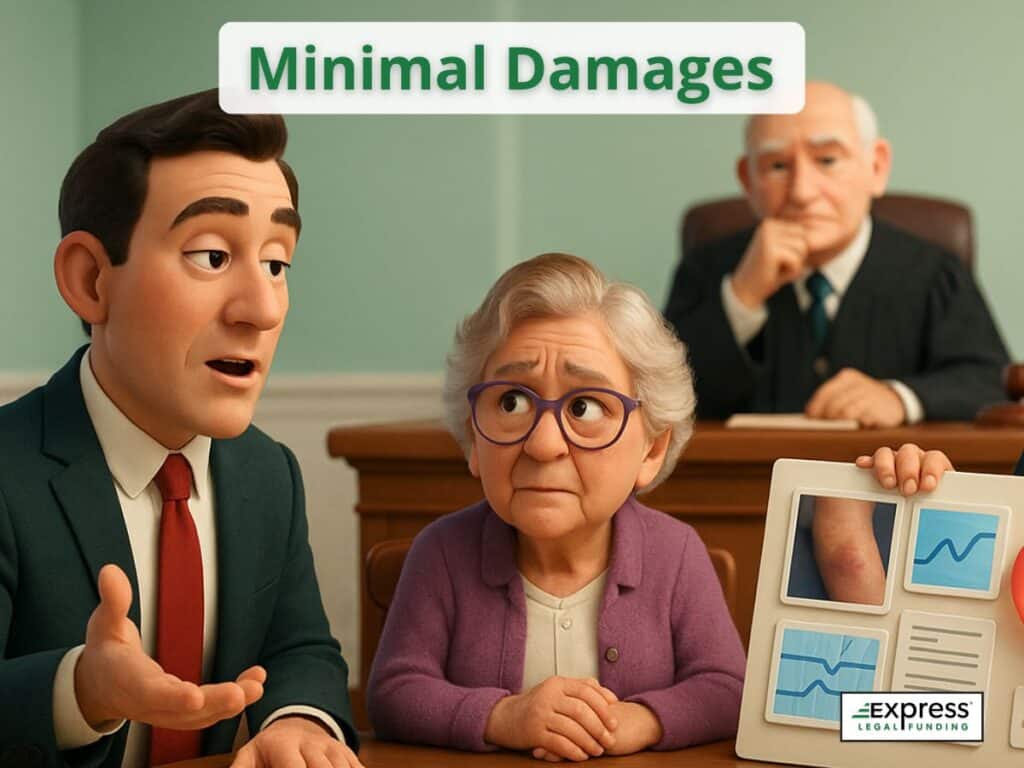
The defense admits something happened but minimizes the severity, suggesting the harm healed quickly or had no lasting impact.
Why they use it
Reducing the perception of harm can lead to lower damages or even make the cost of litigation outweigh the potential recovery for the plaintiff.
How to counter it
- Show Long-Term Consequences: Use medical expert testimony to connect the injury to permanent decline, loss of independence, or death.
- Highlight Quality-of-Life Impact: Even “small” injuries can lead to loss of mobility, depression, or inability to participate in activities.
- Use Before-and-After Evidence: Photos, videos, and testimony from family showing the resident’s abilities before the incident versus after.
Example
A California nursing home claimed an untreated infection caused “no meaningful harm” because the resident “was already inactive.” Medical experts testified that the pain led to complete withdrawal from eating and socializing. The jury awarded $1.4M, citing emotional suffering as a major factor.
7. Procedural Defenses
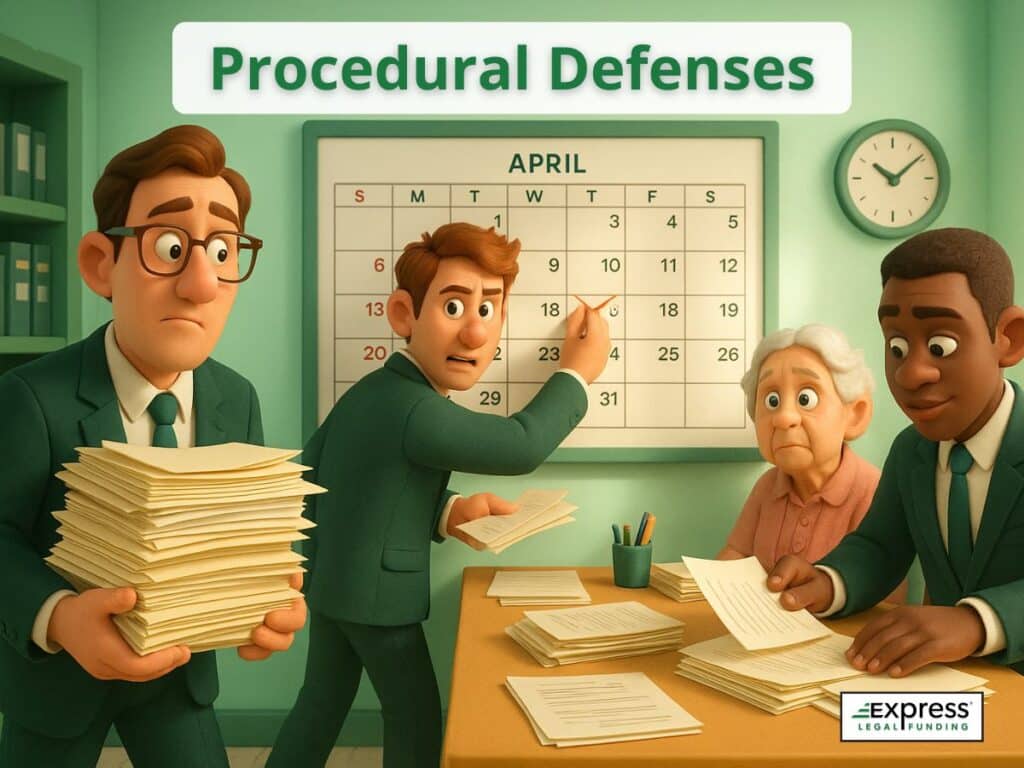
Instead of disputing what actually happened, a nursing home might argue the case should be thrown out on technical or legal grounds before it ever reaches a jury. These are called procedural defenses and are designed to block lawsuits early.
Common examples include:
- Statute of Limitations: Claiming the case was filed too late.
- Lack of Legal Standing: Arguing that the person who filed the lawsuit doesn’t have the right to do so.
- Improper Notice or Filing Errors: Pointing to minor mistakes in paperwork or service.
- Arbitration Clauses: Forcing the case into private arbitration instead of a public courtroom.
Why they use it
Procedural dismissals end the case before it reaches a jury, saving the home from the costs and risks of trial.
How to counter it
- File Early and Correctly: Know your state’s statute of limitations for nursing home abuse and prepare filings correctly from the start.
- Ensure Proper Legal Standing: In wrongful death or incapacity cases, confirm who can legally file on behalf of the resident.
- Challenge Arbitration Clauses: Courts may void these agreements if the resident lacked capacity to consent or if the clause is unfair or hidden in the admission paperwork.
- Use Statutory Exceptions: Many states toll (pause) deadlines for residents with dementia, hidden injuries, or delayed discovery of harm.
Example
In Illinois, a nursing home moved to dismiss a case because it was filed after the statute of limitations. The plaintiff’s attorney proved the abuse was concealed through falsified records, triggering an exception. The court allowed the case to proceed, ultimately leading to a $2.2M settlement.
Why Anticipating Defenses Early Matters in Nursing Home Lawsuits
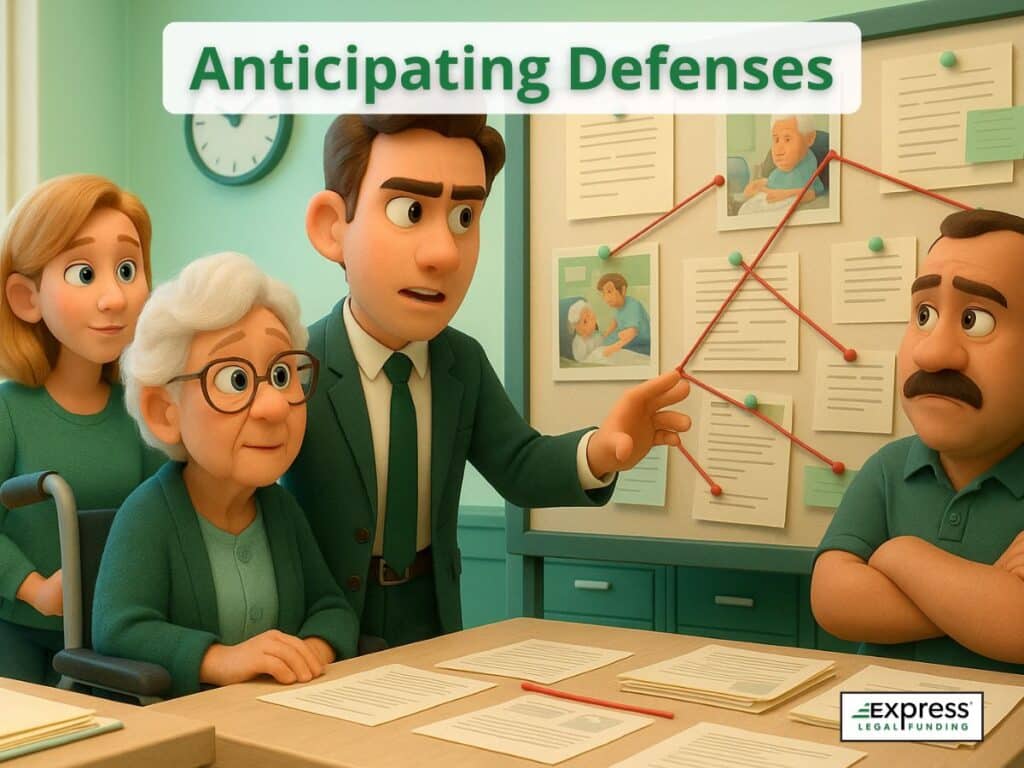
Families often focus only on telling their story of what went wrong — which is important — but anticipating the defense’s arguments from day one allows your legal team to gather targeted, hard-to-refute counter-evidence.
This kind of preparation often pressures nursing homes into higher settlements because they can see the weaknesses in their own case before the trial even starts.
Conclusion: Protecting Your Loved One and Securing Justice from Nursing Homes
Nursing homes may be prepared with polished defenses, but families are not powerless. With the right attorney, carefully gathered evidence, and persistence, you can dismantle each excuse and hold negligent facilities accountable. Every “defense” they raise is really an opportunity to shine a brighter light on what went wrong — and why your loved one deserves justice.
At Express Legal Funding, we understand that pursuing a nursing home abuse lawsuit isn’t just emotionally draining — it can also be financially overwhelming. That’s why we provide non-recourse pre-settlement legal funding to help families cover essential living expenses while their case moves forward. Unlike loans, our funding is non-recourse, which means you only repay if your case is successful.
If your loved one has suffered from abuse or neglect and you’re ready to push back against nursing home defenses, don’t let financial pressure force you into a lower settlement.
Contact Express Legal Funding today to explore your legal funding options and get the support you need to fight for accountability and protect your family’s rights.
FAQs About Nursing Home Lawsuit Defense Strategies
What are common defenses nursing homes use against abuse claims?
Common nursing home defenses include: pre-existing condition or frailty, unavoidable accident, compliance with regulations, lack of proof or causation, minimal damages or failure to mitigate, contributory negligence or assumption of risk, blaming third parties, arbitration clauses, and statute of limitations arguments. Each aims to shift blame or limit liability—prepare counter-evidence early.
How does a nursing home use the ‘pre-existing condition’ defense?
Facilities argue the injury stems from the resident’s prior illness or general decline, not negligent care. Counter with baseline medical records, a clear timeline, and expert testimony tying harm to preventable failures—e.g., missed turning schedules, ignored fall-risk plans, or inadequate wound monitoring—showing the condition should have been anticipated and safely managed.
Can a nursing home argue it was an unavoidable accident?
Yes. Nursing homes often claim falls, infections, or choking were unavoidable despite reasonable care. Rebut by showing preventability: staffing logs and assignments, call-bell and response-time data, hazard and maintenance records, deviations from care plans or policies, prior similar incidents, and expert opinions demonstrating that proper supervision and protocols would likely have prevented the harm.
What is the statute of limitations for nursing home abuse?
Deadlines for filing nursing home abuse lawsuits are state-specific—commonly one to three years for injury claims, with different periods for wrongful death. Many states apply a discovery rule (clock starts when harm is discovered) and may toll for incapacity or fraud. Act quickly: confirm your state’s limit, preserve records, and file correctly to avoid dismissal.


